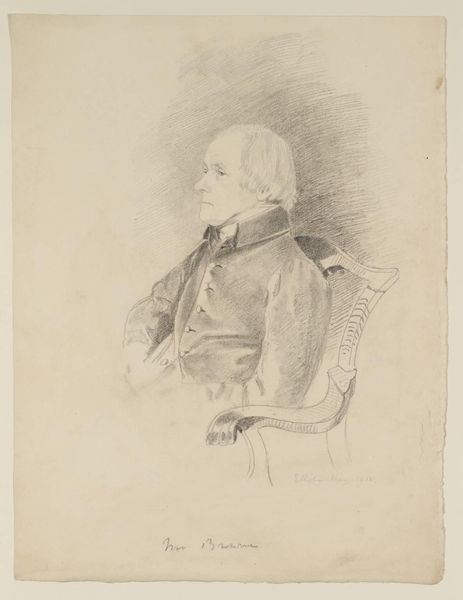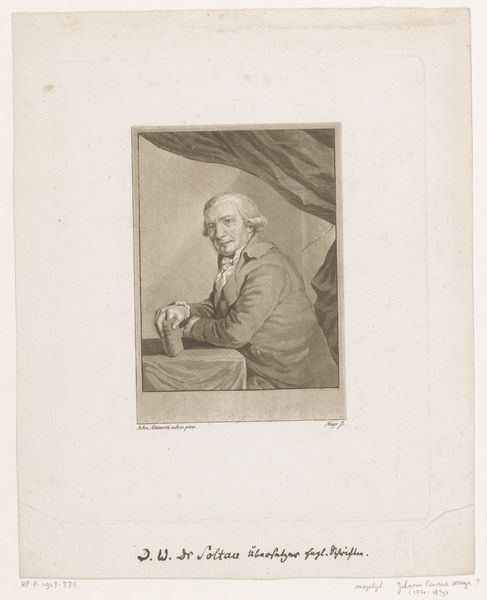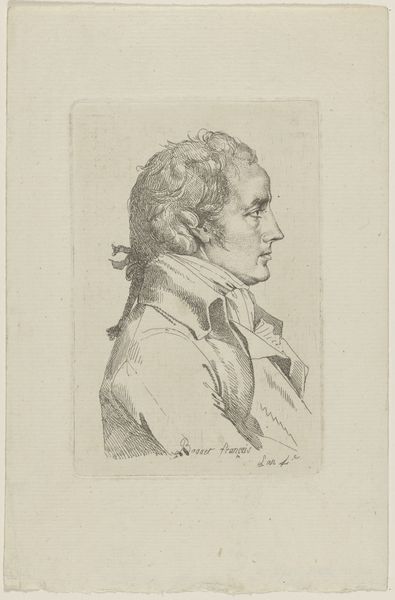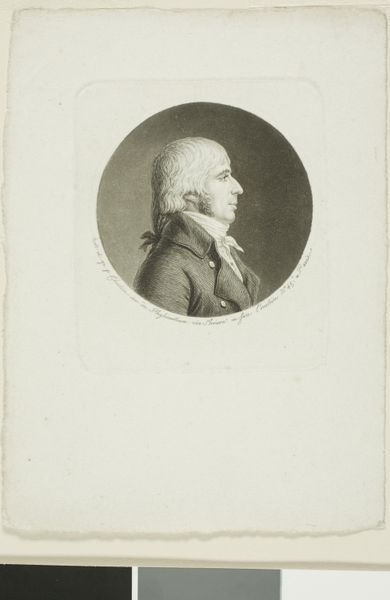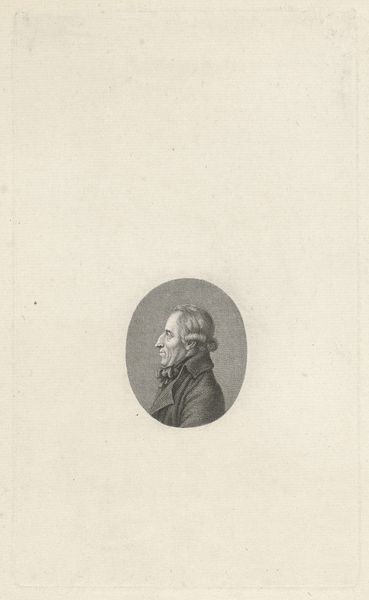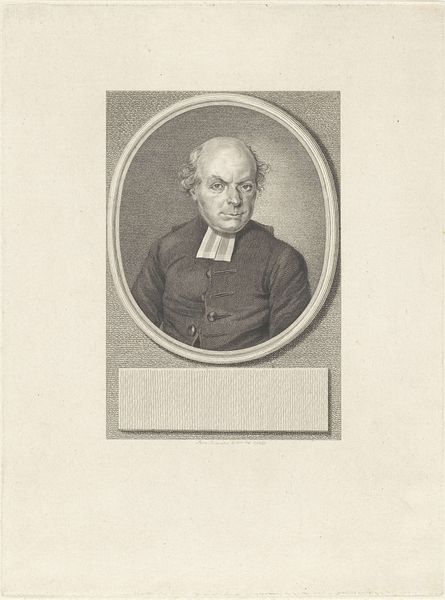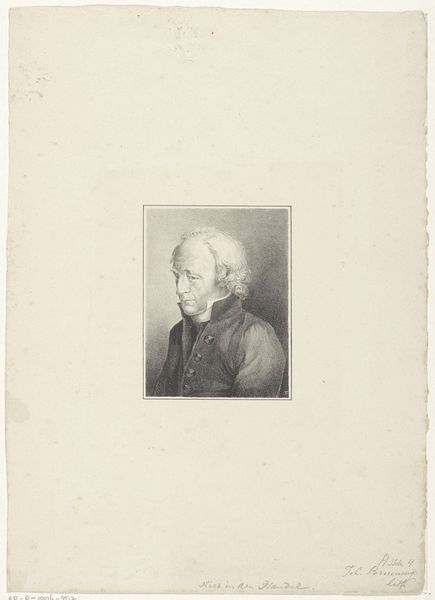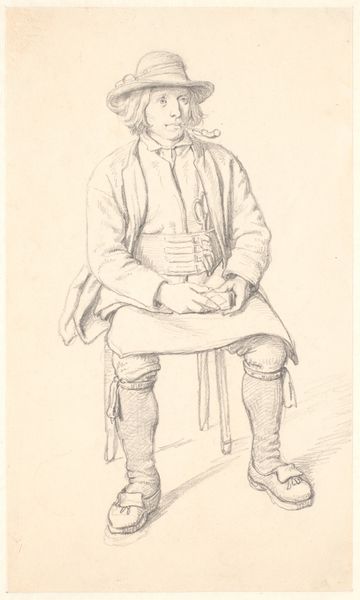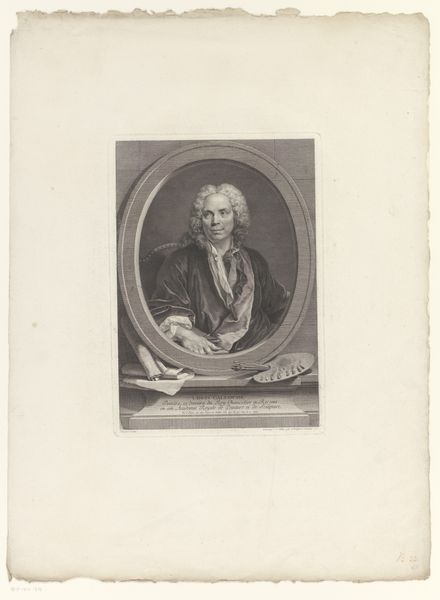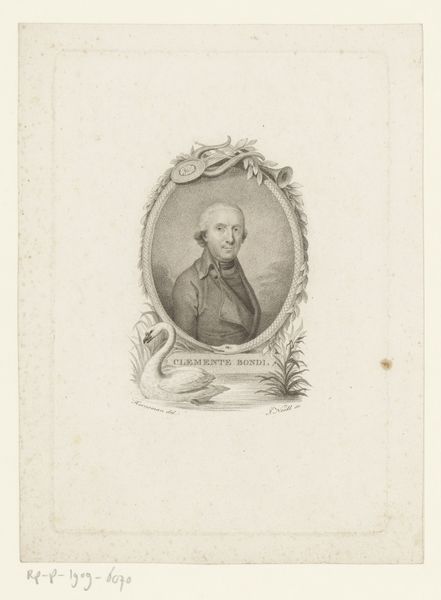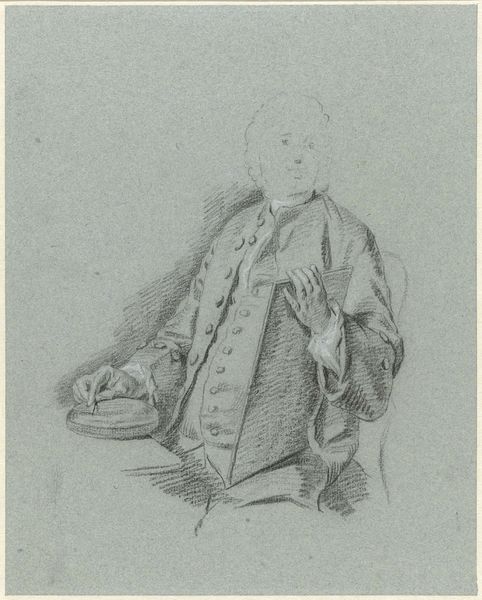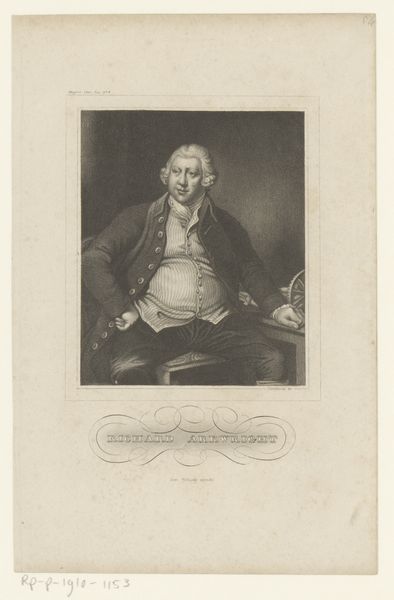
drawing, pencil, charcoal
#
portrait
#
pencil drawn
#
drawing
#
neoclassicism
#
pencil sketch
#
charcoal drawing
#
pencil drawing
#
pencil
#
portrait drawing
#
charcoal
#
realism
Dimensions: height 280 mm, width 244 mm
Copyright: Rijks Museum: Open Domain
Curator: This is a portrait of Joannes Bemme Azn., dating roughly between 1816 and 1875, attributed to Christian Gerhard Rudolf Meijer. It appears to be a drawing executed in pencil and charcoal. What's your initial impression? Editor: Austere. The composition, framed by the oval, coupled with the almost monochromatic palette creates a rather serious and contemplative mood. There is very little visual fluff, a kind of tonal essence almost. Curator: Precisely. And that austerity speaks volumes about the materials accessible, the labor involved, and perhaps even the societal values influencing its creation. Think of the constraints – or advantages – of working primarily with pencil and charcoal in that era. How does this limit or shape the artistic vision? Editor: Formally, the restricted palette places huge emphasis on the tonal values and line work. Look at how Meijer uses hatching and cross-hatching to build up the volume and textures. The fur trim of the jacket is indicated by subtle variations in density of tone, and there's that play with negative space. The white of the paper helps define the man's garments and wig. It's an exercise in controlled restraint, isn't it? Curator: A perfect choice of words. The paper itself takes on such a prominent role as both medium and, dare I say, artistic agent. What statements about social class might the use of these accessible drawing tools imply, contrasting with the expectations of painted portraiture? What were the production possibilities offered by the accessibility of paper, pencils, and charcoal? Editor: Yes, well, focusing just on the aesthetic, the composition directs our gaze from the gentleman's placid features to the elegant pose in the chair. The lines of the wooden chair lead the eye toward the table where some documents are displayed, anchoring the composition while implying his station in life and suggesting the gentleman’s serious nature and intelligence. The circle provides a rigid sense of completion and artistic intention. Curator: Intriguing that the artist also documents that very chair in great detail, giving us clues as to furniture production and craftwork in this period, reminding us of all the labor, design and materiality around this commissioned artwork. The textures in this portrait tell several tales about that time. Editor: Indeed. Together, all those textures do combine to deliver that almost tangible quality to this work. Looking at it now, what strikes me most is the overall compositional harmony of the drawing despite the tonal simplicity, wouldn’t you agree? Curator: I see it a bit differently now, reflecting on production methods in that era, how materials were sourced, and the work involved in the process. This perspective gives me much food for thought about that historical period!
Comments
No comments
Be the first to comment and join the conversation on the ultimate creative platform.
